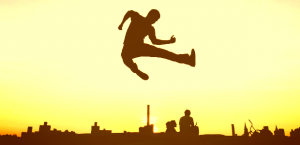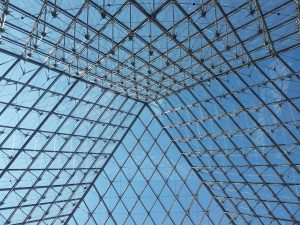
According to Copyblogger, 80% of people never read past the headline of a web page. The headline is where you make your first impression on your reader and if 80% of readers never look any further, that headline is a failure.
And it gets worse. At least if someone is on your site, there’s the chance that something else might attract their attention. But if they are reading a blah headline in an email newsletter or on a social media site, most people won’t click and you won’t get the traffic and attention you expect.
That doesn’t have to be your story.
With the right tools and techniques you can create headlines that make people want to click, read and visit your site, bringing huge amounts of traffic your way. And those same headlines will make people want to share your content, increasing your audience even more.

What Good Headlines Do
Before we get into the tips, let’s refresh our memory on what headlines have to do. A good headline:
● gives potential readers a snapshot of what the content will be about. This can either be clearly stated or can be a teaser inviting them to read more.
● makes a promise to readers that you have to keep when writing the content.
● makes your social cards and search engine listing more interesting to win more clicks and traffic from readers and searchers.
● creates a sense of immediacy and urgency or by makes readers anticipate that they will learn something essential by reading your content.

Now that you know what your headlines have to achieve, here are seven ways to make them more effective.
1. Write A Lot Of Headlines
As a former journalist and editor, I know that the first headline you come up with for a piece of content isn’t always the best one. In fact, by the time you publish the content, the final headline is often far removed from your first attempt. So I was interested to see that CoSchedule’s Garrett Moon recommends you write about 25 possible titles for every piece of content. Yes, 25! Once you’ve done that, discard everything but the last third, because it’s the headlines you come up with when you dig deep and think you’re out of inspiration that are often the most innovative and exciting. This tip is based on Upworthy’s approach and you know how viral their headlines are.
Don’t have a lot of time? Even writing 10 headlines will work, says Garrett Moon, though the more you write, the better your chances of hitting headline gold.
2. Use Suggestion Tools
We can’t always feel inspired, so when you’re stuck for headline ideas, try a headline suggestion tool. For example, if you use the Portent Content Idea Generator, you can put in your topic, then click the arrow to get a suggestion. And if you don’t like the one you get, keep clicking till you get one you like.

In my experience, these titles can be of varying quality, but they often serve to spark the imagination for a better idea. Since the suggestions are based on proven traffic magnet templates, they’re worth some attention. Hubspot also has a blog topic generator that works in a similar way.
If you’d rather blow the box away than think outside it, then there are a couple more fun tools to help you. The Clickbait Headline Generator suggests clickworthy headlines which you are free to use or can adapt for your own content. And you can also get inspiration from the Upworthy Generator which suggests Upworthy-style headlines or from the Buzzfeed Generator, which does the same for Buzzfeed.
3. Get The Length Right
All headlines aren’t created equal – and opinions vary on what the ideal headline length is. Back in 2009, Jakob Nielsen analyzed BBC news stories to find the ideal length for online content and concluded that it was five words (34 characters). That doesn’t give you much room for anything but the facts. To grab attention in an era of waning attention spans, you need a few more words than that. Headlines on Buzzfeed and Upworthy (let’s just call them the viral headline holy grail) are usually much longer than that.
There are even more stats:
● Research from Outbrain found that content with headlines between 60-100 characters had the best click through rate.
● Buffer says ideal character counts are 71-100 for Twitter, 40 for Facebook and 60 for Google+
● CoSchedule found that email subject lines around 50 characters perform well.
So what’s the ideal length? According to CoSchedule, headlines between 50 and 70 characters will work well for most sites, though you may need to tweak your headline depending on whether you’re more interested in SEO, email clickthrough or engagement.
4. Invest In Word Power
It shouldn’t be a surprise, but using the right language make a big difference to how people respond to your headlines. Luckily, there’s a lot of research to help you improve your own headlines.
Ripinn’s analysis of 2616 viral headlines found that:
● name-dropping increases a headline’s potential, whether you are citing a current trend or event or a popular celebrity.
● using techniques to make people more curious works well.
● mentioning strong emotion gets more attention
● bold titles work, as long as your content has the evidence to back up your claims
Buffer’s followup to the Ripenn research also found there are several viral headline words and phrases, like “the most”, “why” and “how to”. Addressing readers directly also helps, as do phrases that create immediacy.
5. Learn From The Best
All the tips above show you how to find templates that work to create your own headline, but they aren’t the only way to fly. You can also learn from the best by finding headlines that people have already clicked and shared. Buzzsumo is a great tool for doing this kind of research. Either check out the trending topics and use these as a jumping-off point or type in your search term and use the on-site filters to see what’s been popular in your niche recently. Then use your findings to create a new title that will work for your topic.

Finally, avoid starting from scratch if you can. A great way to find headlines that you already know work is to use BuzzSumo. Input your top and check out the most shared headlines. Use the on-site search filters to check for recently popular topics. Use your findings to create new versions which will work for your topic.
Another good way to find headlines that work is to connect your Twitter and Facebook accounts to Nuzzel and see what your followers are sharing. It’s an excellent way to get a quick overview of what’s hot now, and if you publish often it could help you ride current trends. Growth Hackers and the Inbound.org community can also help with this.
You can also use headline swipe files, which break down the best performing headlines into their component parts to give you templates that work for virtually any topic. Great options here are:
● this list from Jeff Bullas
● these headline templates from Blog Marketing Academy
● these templates recommended by Copyblogger
● this list of headline ideas from CoSchedule
6. Analyze Your Headline
By the time you get to this step, you should have a bunch of potential headlines at roughly the right length and using words that you know work. Now it’s time to do some further fine tuning. That’s where headline analyzers come in.
The Advanced Marketing Institute’s Emotional Marketing Value Headline Analyzer tests your headline for the likelihood that it will connect with your customers emotionally. The higher the score, the better. I’ve found it difficult to get a true assessment from this tool because the content categories available don’t always match what I’m writing about, but it may work for you.

An even better tool, in my opinion, is the free CoSchedule Headline Analyzer. Plug in your headline and you get an analysis which includes an assessment of emotional impact, power words, word balance and readability. It also identifies the beginning and end of your headline (since this is where most people read) so you can see if what readers see will pack a punch. Keep tweaking your headline till you’re happy with the score.

7. Test And Measure
Finally, test your headlines to see how people respond. In the end, this is where all the work you have put in will pay off and you’ll find out what really works. Ways to do this include:
● using an A/B testing WordPress plugin to see which title readers respond to best.
● creating and testing different headlines for social media, as Buzzfeed, Upworthy and others do.
● using social media polls to find out which title appeals to readers most.
You can also experiment with timing to see if that affects how people respond to your headlines.
In the end, you will have to combine a number of these techniques to find the formula that works best for you. Have you had any posts go viral? What did you learn about your audience from that experience?
Hand-Picked Related Articles:
- How to Easily Generate Over 100 Blog Titles on a Single Topic
- Prevent Your Blog Titles From Sabotaging Your Efforts [Headline Writing 101]
- 5 Keyword Research Steps For Winning Blog Post Titles
* Lead image adapted from Steven Ritzer
7 Tips For Growth Hacking Traffic Monster Headlines
The post 7 Tips For Growth Hacking Traffic Monster Headlines appeared first on Search Engine People Blog
(86)






